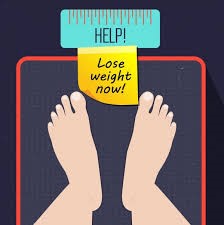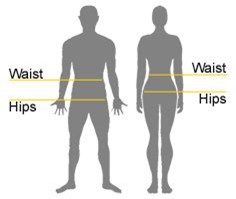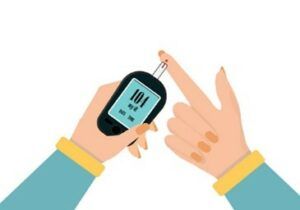

Everyone dreams of a perfectly healthy body. You can achieve this dream. It is not impossible. As you age, the need to be healthy becomes a priority if you want to continue leading an unencumbered lifestyle not impeded by ill-health.
Taking positive action for better health is the best option that you can do. Do you know that you can plan an ideal lifestyle for good health and a long life span?
Making small changes to your lifestyle can greatly impact your overall wellness. Today we will discuss what changes you can make to improve your health and wellbeing. Making these changes is easier than you think, and they will help you feel better both physically and mentally.
So, let’s get started!
1. Eat Healthy, Live Healthy, and Be Healthy
Live well, be healthy is maintaining your health by sticking to a healthy diet, every day. That is the first step. Eating healthy, nutritious foods helps your body to function at its best. It also helps to prevent chronic diseases such as heart disease, stroke, and diabetes. There are many different ways to eat healthily, it does not have to be expensive or difficult.
Here are a few tips for eating healthy:

- Eat a variety of fruits and vegetables
- Include whole grains in your diet
- Avoid processed foods and sugary drinks
- Make sure you are getting enough protein and healthy fats
Eating healthy doesn’t have to be complicated. By following these simple tips, you can easily improve your diet.
Eating a healthy diet would also help you maintain a good weight.
2. Daily Exercise


Starting an exercise regime is the second step. Exercises are another important way to maintain your health. It helps to control weight, reduce stress and improve moods. Exercise also has many other benefits, such as reducing the risk of chronic diseases such as heart disease, stroke, and diabetes. The best way to get the most out of exercise is to make it a regular part of your routine.
Here are a few tips for getting started:
- Start with moderate exercise and work your way up
- Choose an activity that is easy and enjoyable, maybe with a friend
- Exercise should include both aerobic and strength training exercises
- Exercising doesn’t have to be hard or time-consuming. There are also various items you can use to maximize the effects of exercising, like sweater vests and comfortable running shoes.
- By incorporating a little bit of exercise into your daily routine, you can improve your health physically and spiritually.
- Regular exercise and a good diet would help you maintain a good BMI.
See my compiled healthy recipes and healthy and active lifestyle tips.
Healthy Recipes | @annhariz2022 | Flipboard
Healthy and Active Lifestyle | @annhariz2022 (flipboard.com)
3. Take Time to Relax and Rewind-Me time


In today’s fast-paced world, it can be tough to find time for yourself. But taking some time for yourself is important for your mental health as it relieves stress. When you take the time to clear your head, you allow yourself to relax and recharge. This can be done in various ways, such as meditation, reading, yoga, or simply taking a walk. Here are a few tips for finding time to clear your head:
-
-
- Set aside time each day to relax
- Turn off your phone and other electronic devices
- Find an activity that helps you relax
-
Taking some time for yourself is essential for maintaining your tranquil mental state. By finding a way to relax and clear your head, you can reduce stress and anxiety.
4. Follow a Consistent Sleeping Routine

One of the most important things to achieve good health is to get enough sleep. I know for sure; that my blood pressure would tend to spike if I have a problem falling asleep at night. Going to bed and waking up at the same time each day, even on weekends should be the goal. This may be difficult to do at first, but it will get easier with time.
A lack of sleep can lead to several health problems, including obesity, diabetes, heart disease, and stroke. Poor sleep patterns also increase inflammation, slow down healing, and lower immunity.
Experts generally agree that adults need around seven to eight hours of sleep per night to allow our bodies to heal and recuperate. Older adults normally have a lighter sleep span but take a longer time to fall asleep and wake up multiple times during the night.
Toddlers and pre-schoolers need 10 -13 hours per 24 hours including naps. Children aged between 6-12 years old need 9-12 hours of sleep per 24 hours. Teenagers (13-18 years) need to sleep 8-10 hours per 24 hours.
How do we ensure the best way to stick to a consistent sleeping schedule?
By adopting the following tips, we can improve the quality of our sleep.
- Don’t spend too long in bed
The first thing we often do when we can’t sleep is starting going to bed earlier, but this could be counterintuitive. ‘You should reduce the amount of time you spend in bed. Go to bed later and get up earlier, as this will encourage your body’s natural sleep drive to kick in. By reducing the time you spend in bed you will crave more sleep, fall asleep faster and find the quality of your sleep will improve.
- Stop clock-watching
Tick tock, tick tock…staring at your alarm clock will only lead to further worry and anxiety. ‘It’s very tempting to look at the clock every time we wake up. We want to monitor how little sleep we are getting; however, this increases the pressure to fall back to sleep and makes it less likely. Set your alarm clock for the morning then avoid looking at the time again.
- Manage your thoughts
A busy mind is one of the most common culprits in keeping us awake at night, and journaling can be an effective way to offload. Make time to jot down what is on your mind, this can be therapeutic as it is a way of getting things out of your head. ‘You don’t need to solve all of your problems, but when they are written in black and white you will get a different perspective on things. For example, worrying that tonight you might not sleep only makes it more likely that you won’t. Write down that thought and acknowledge it but then change your focus,’ says Kathryn.
- Get active
You might not be able to get to the gym right now, but you can still keep moving. Exercise can have a beneficial effect on your sleep routine – it calms down your mind and keeps you feeling good. ‘Not only is exercise outdoors a great way to start the new year, but it’s also actually great for your mental and physical health, and anything you can do to reduce anxiety is beneficial for your sleep,’ believes Kathryn. There are plenty of ways you can get active – try one of our WF workouts or go for a daily run or walk.
- Don’t lie in bed awake
If you wake up in the middle of the night, don’t lie under the covers tossing and turning. ‘The longer we lie in bed trying to fall back to sleep the more frustrated we get. This, in turn, means we begin to subconsciously relate bed to feeling stressed and being awake rather than asleep. Leave the bedroom and do something relaxing like reading a book downstairs, then when you are tired go back to bed.
Here are a few tips for creating healthy sleeping habits:
-
-
- Avoid caffeine, tobacco, and alcohol before bed
- Avoid working or using electronic devices in bed. Keep all your gadgets especially mobile phones out of range
- Create a relaxing bedtime routine
-
When it comes to sleep, consistency is key. By establishing a regular sleeping schedule, you will be less likely to suffer from the negative health effects of sleep deprivation.
Making these lifestyle changes is an important step in improving your wellness. By following the above tips, you can live a healthier and happier life. Looking good and feeling confident would go a long way to achieving the lifestyle you dream of.
Before we embark on the strategies to be healthy, there will be an initial preparation to ascertain our state of health, mentally and physically. Are we ready to step towards change?
As we progress, we will discuss in detail each of the strategies mentioned above. The first topic will be ‘eating well. As food is something we enjoy, we need to replace the ‘bad and unhealthy diet’ with appetizing and sumptuous food that is palatable and pleasing to eat, as a routine.
Check out the following programs:
A Natural Blood Pressure Program
Paleo Diet -The only Paleo Cookbook You ever Need
Note: We may earn commissions when you purchase through our affiliate links.







 Blood Pressure Meter
Blood Pressure Meter Blood Glucometer
Blood Glucometer
 Signs of low self esteem
Signs of low self esteem Recap on Body Mass Index, BMI
Recap on Body Mass Index, BMI

